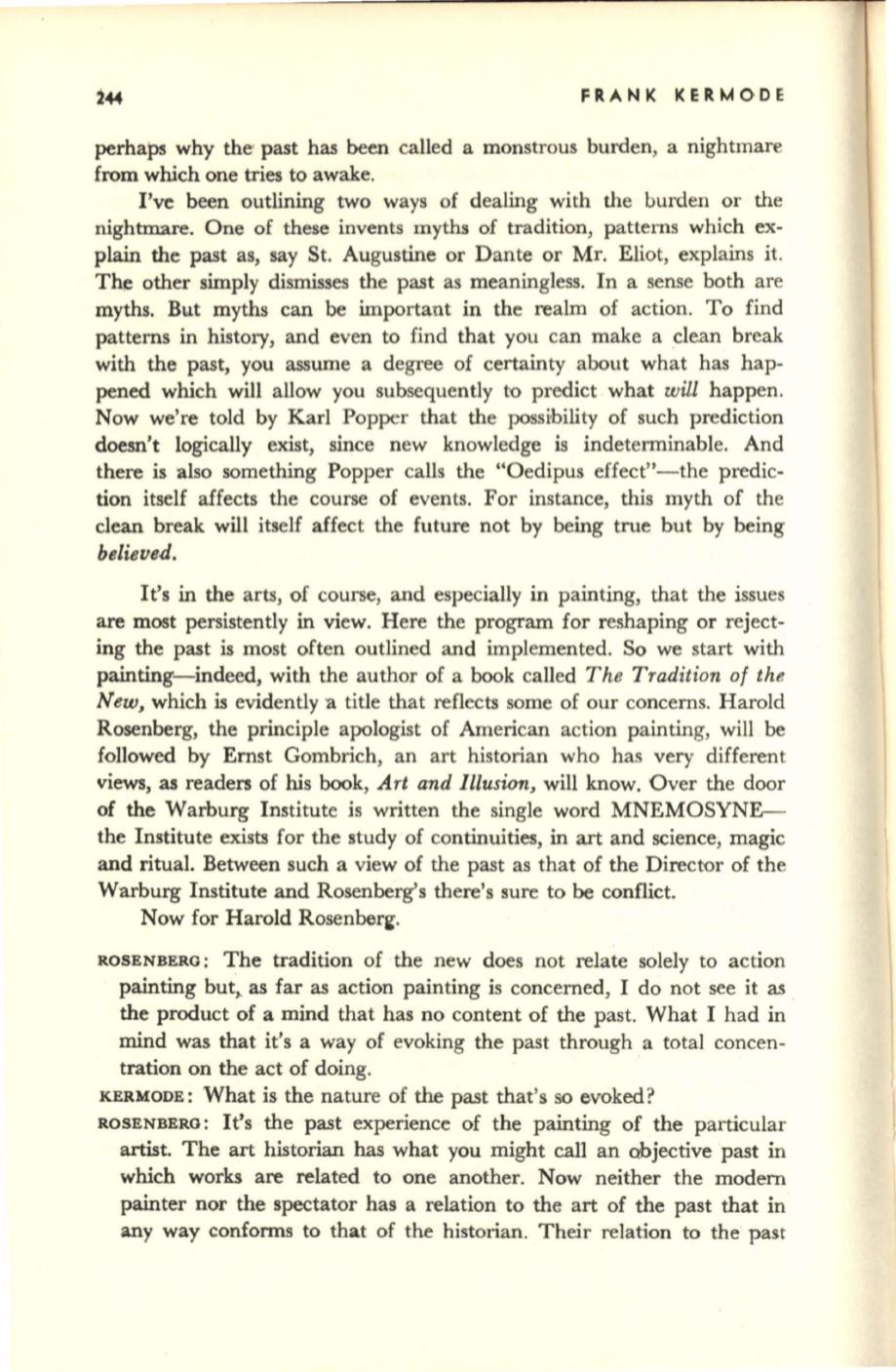
FRANK KERMODE
perhaps why the past has
been
called a monstrous burden, a nightmare
from which one tries to awake.
I've been outlining two ways of dealing with the burden or the
nightmare. One of these invents myths of tradition, patterns which ex–
plain the past as, say St. Augustine or Dante or Mr. Eliot, explains it.
The other simply dismisses the past as meaningless. In a sense both are
myths. But myths can be important in the realm of action. To find
patterns in history, and even to find that you can make a clean break
with the past, you assume a degree of certainty about what has hap–
pened which will allow you subsequently
to
predict what
will
happen.
Now we're told by Karl Popper that the possibility of such prediction
doesn't logically exist, since new knowledge is indeterminable. And
there is also something Popper calls the "Oedipus effect"-the predic–
tion itself affects the course of events. For instance, this myth of the
clean break will itself affect the future not by being true but by being
believed.
It's in the arts, of course, and especially in painting, that the issues
are most persistently in view. Here the program for reshaping or reject–
ing the past is most often outlined and implemented. So we start with
painting-indeed, with the author of a book called
The Tradition of the
New,
which is evidently a title that reflects some of our concerns. Harold
Rosenberg, the principle apologist of American action painting, will be
followed by Ernst Gombrich, an art historian who has very different
views, as readers of his book,
Art and Illusion,
will know. Over the door
of the Warburg Institute is written the single word MNEMOSYNE–
the Institute exists for the study of continuities,
in
art and science, magic
and ritual. Between such a view of the past as that of the Director of the
Warburg Institute and Rosenberg's there's sure to be conflict.
Now for Harold
Rosenber~.
ROSENBERO:
The tradition of the new does not relate solely to action
painting
but~
as far as action painting is concerned, I do not see it as .
the product of a mind that has no content of the past. What I had in
mind was that it's a way of evoking the past through a total concen–
tration on the act of doing.
KERMODE:
What is the nature of
the
past that's so evoked?
ROSENBERO:
It's the past experience of the painting of the particular
artist. The art historian
has
what you might call an objective past in
which works are related to one another. Now neither the modem
painter nor the spectator has a relation to the art of the past that in
any way conforms to that of the historian. Their relation to the past


